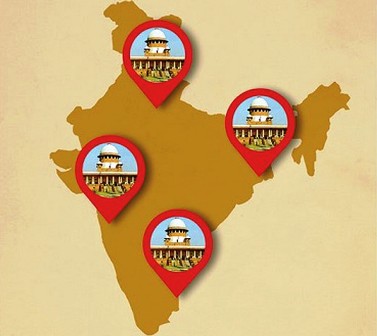In September 2019, while launching a book, the Vice President and Chairman of the Rajya Sabha, M. Venkaiah Naidu, spoke about judicial reforms for the speedy resolution of pending cases. In his speech, Mr Naidu suggested bifurcating the Supreme Court in four divisions and establishment of regional branches. These reforms will definitely have a positive impact on judicial pendency.
The bifurcation of the Supreme Court and establishment of regional benches in India has been though out for many years. The main reason for the same being the excessive jurisdiction of the Hon’ble Supreme Court. The Court has the original jurisdiction for the enforcement of fundamental rights under Article 32. It is the highest court of appeal in civil and criminal cases and also has advisory jurisdiction under Article 143 of the Constitution. Such wide jurisdiction has led to overburdening of the Supreme Court.
Due to the high caseload of the Apex Court, timely justice has become impossible at the highest level. Thus, we need to separate the functions of the Supreme Court. About 55 nations in the world, including Columbia, Egypt, France, Germany, Iran, Italy, Myanmar, Fiji, Russia, South American, and several other European nations have a separate “Constitutional Court” for constitutional matters and a court of last appeal for other matters for smooth functioning of the judicial system.
In 1984, the tenth Law Commission in its 95th Report titled “Constitutional Division within the Supreme Court – A proposal for”, recommended that the Supreme Court of India should consist of two Divisions – Constitutional and Legal. The Commission suggested that all constitutional matters should go to one division and the rest to the legal division. The same recommendation was made by the 11th Law Commission in its 125th report. In 2009, the 18th Law Commission recommended four cassation benches of the Supreme Court.
Today, the number of judges per 10,00,000 people is mere 10.5 in India. In comparison, the US has 107, Canada has 75, the UK has 51 and Australia has 46 judges per million people. Apart from the lack of judges, one can imagine the plight of the litigants who travel across the country to seek justice in the Supreme Court. They have to spend a lot of time and money in travelling to Delhi. The expenses quickly multiply if there is an adjournment. If we have four regional branches of the Supreme Court, life will become easier for a lot of litigants. It will also allow poorer litigants to seek justice in the Apex Court.
The framers of the Indian Constitution also hoped for regional branches of the Supreme Court as per Article 130. As per the Article, the Chief Justice of India may decide the seat of the Supreme Court with the approval of the President. The bifurcation of the Supreme Court and establishment of regional branches will enable much greater enforcement of the rule of law.
This is a guest post by Avtar Singh Panwar, 5th Year Student at the Government Law College, Indore. The article was originally published in Hindi at azadi.me.
Read More: Musings: Grievances in and of the Supreme Court
Post Disclaimer
The opinions expressed in this essay are those of the authors. They do not purport to reflect the opinions or views of CCS.




